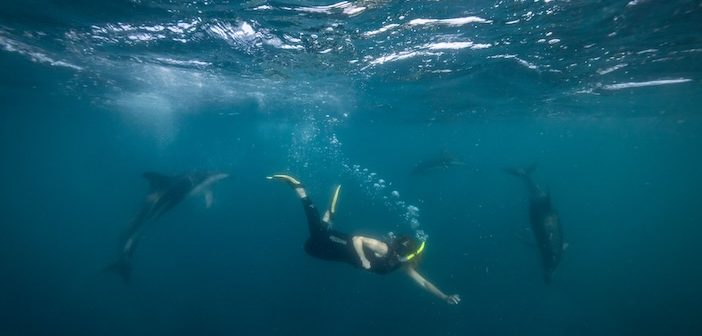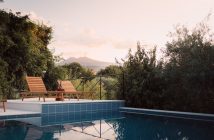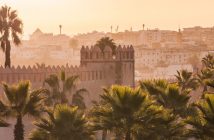When Captain Cook arrived in New Zealand in 1770, his botanist, John Banks, recorded in his diary that the dawn chorus that would awaken him each morning in Queen Charlotte Sound was the most melodious wild music he had ever heard, almost as if the birds were imitating small bells. Of course, there then followed an influx of European migrants who brought with them various animals that preyed on the birds many of which were defenceless – often ground nesting and even flightless.
Up until this point, in fact, there were no land mammals in New Zealand – only what could perhaps be called aerial mammals in the shape of bats. There were, though, and still are many, many marine mammals and wildlife generally and NZ is still one of the best places if you want to spot the creatures of the deep.
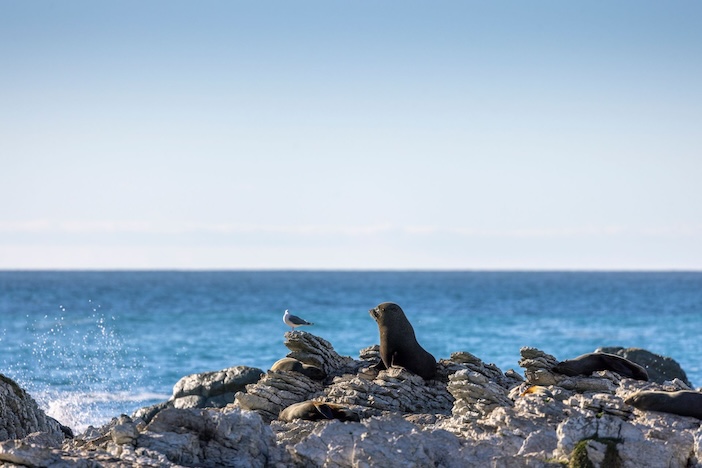
In some cases, they come to you. In Kaikoura on NZ’s South Island, you find seals basking on the limestone platform at the end of town. Right down at the bottom of South Island is the city of Dunedin, the gateway to the Otaga Peninsula, a windswept coastline that really does feel like the wild end of the world. On the drive, I passed gulls, ducks, cormorants sitting on boathouses, their wings spread out to dry, hundreds of black swans feeding in a sheltered bay.
I was heading to Nature’s Wonders, a 650-acre farm where whales frequent the bay to enjoy the cold waters that come up from the Antarctic; seals and sealions bask on a beach that is reserved for them alone and no one (not even the farmer who owns it) ever disturbs them; and built into the steep hillsides above the beach are nesting boxes from which newly fledged yellow-eyed and little blue penguins blink up as you pass by. All the while, there were albatross soaring above.
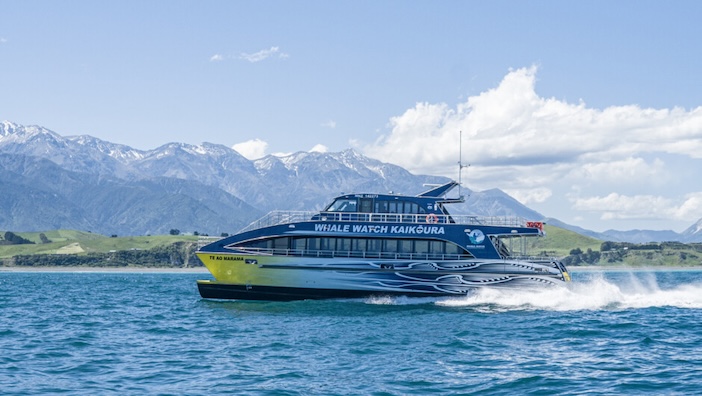
You can, of course, get even closer to the marine life by getting on board a boat. Here, you’re spoilt for choice and all over South Island there are local companies that will take you out to sea. In Akaroa, for instance, if you’re feeling very brave you can don a super-thick wetsuit to cope with the 14C water temperature and go swimming with dolphins in the bay.
There are rare local Hector dolphins here but you can also watch them, rather more comfortably, from the Black Cat catamaran on a nature cruise around the vast harbour. There were dusky dolphins, too, and even a lone little blue penguin swam past us. Every rock in the harbour seems to be covered in seals.
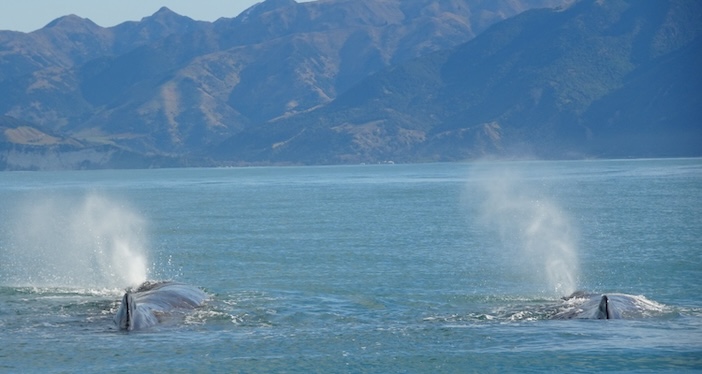
Saddleback and Manu (photo courtesy of Whale Watch Kaikoura)
You don’t have to go that far out to sea before you come across the giants of the ocean. The coast off the town of Kaikoura is one of the few places you’re almost guaranteed to see sperm whales. Whale Watch has two catamarans with knowledgeable crews who know not just exactly where to look for the whales but also everything about their habits. The reason this is such a good spot for whale watching is that just off the coast is the 2km deep Kaikoura Canyon, a deep-sea habitat with a rich foraging ground for sperm whales who, unlike many of their cousins, don’t eat krill but prefer far bigger creatures like sharks and giant squid.
One of the deepest diving whales, sperm whales go hundreds of metres to find their food and each dive is usually around 45 minutes – though it can be up to 60 as they seem to be particularly good at holding their breath. This means that, if the crew spotted a whale surfacing half an hour ago or so, it’s a good time to head back to the area to see if he comes up again. It is, incidentally, always a he round here – young males come here to feed and build themselves up on the rich food supplies while females and young whales prefer warmer waters.
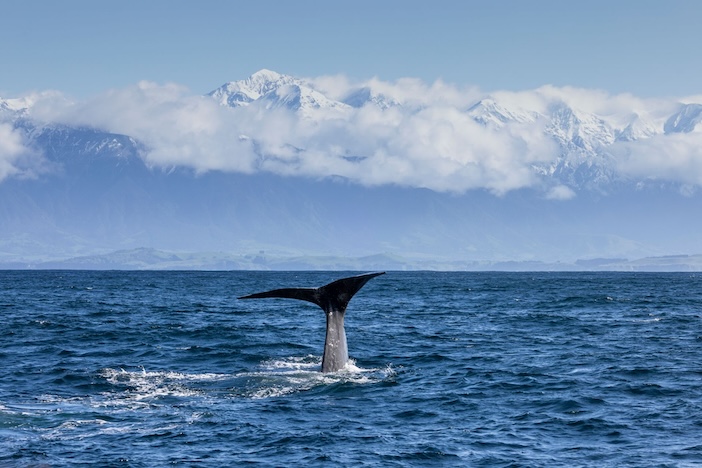
It’s not just sperm whales you’re likely to see in New Zealand. There are humpbacks during the winter months (June to August) often putting on spectacular performances – breaching, lobtailing, flipper slapping. More rarely, blue whales migrate past NZ at different times of year and Orcas and Minke whales, long-finned pilot, pygmy sperm and beaked whales can be spotted, too.
Despite the appalling wet weather on the summer’s day I went – not for nothing does NZ’s Maori name, Aotearoa, mean “long white cloud” – I counted myself very lucky. There were two sperm whales who both took a dive and gave a magnificent tail flip on each occasion. No matter if you’ve seen whales before, it’s a sight that takes your breath away every time.
For more information about whale watching experiences in New Zealand, please visit www.whalewatch.co.nz. For more information about Nature’s Wonders and their conservation efforts and ecotourism, please visit www.natureswonders.co.nz.
For more information about New Zealand’s natural wonders, and to start planning your trip, please visit the official tourism website at www.newzealand.com.
NZ Tourism photos by Miles Holden

